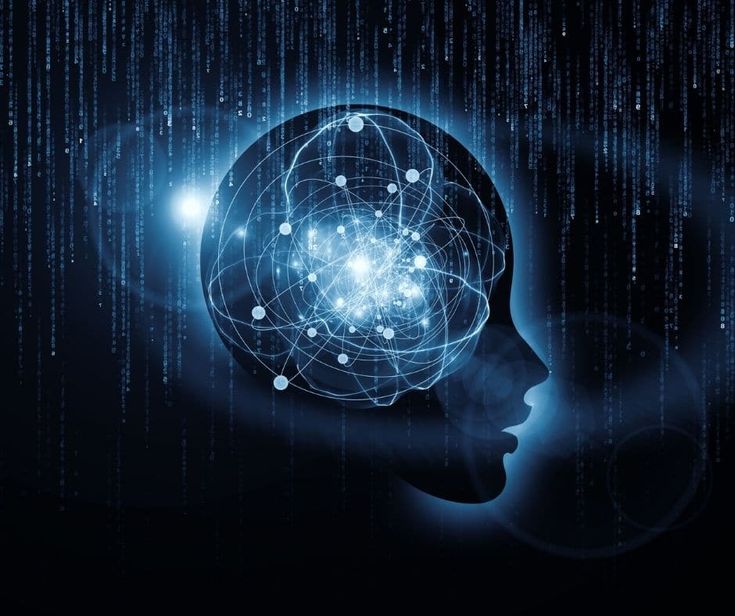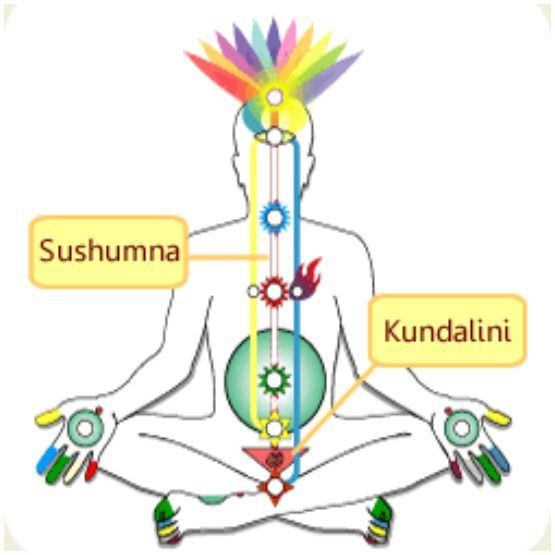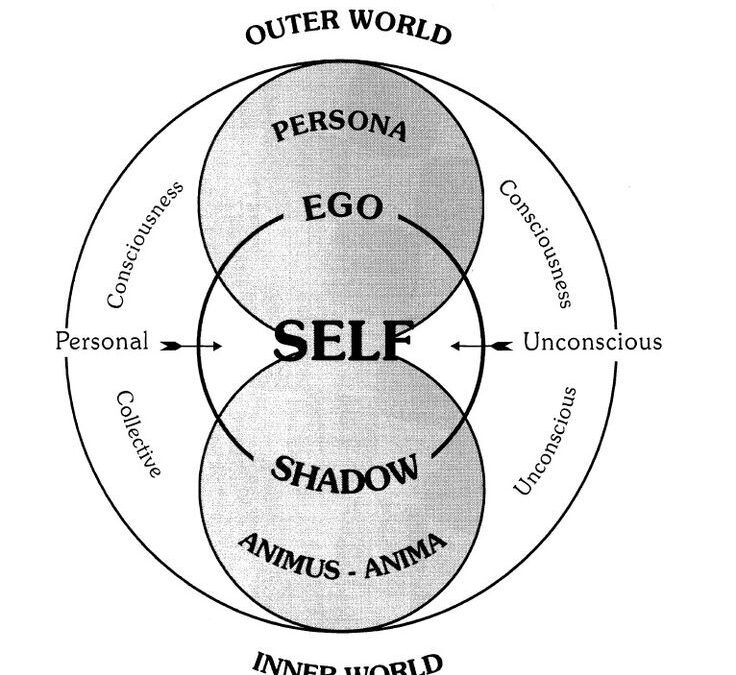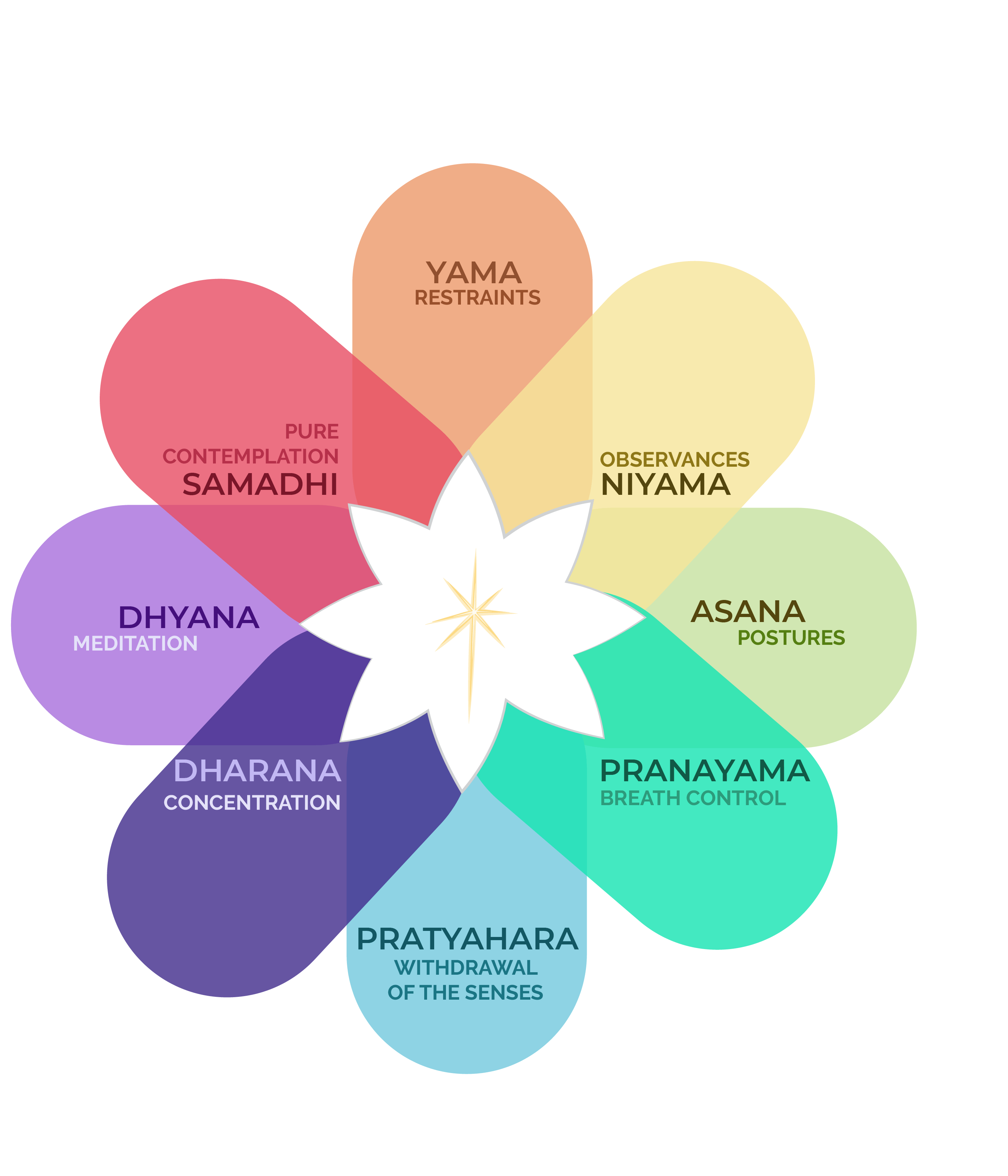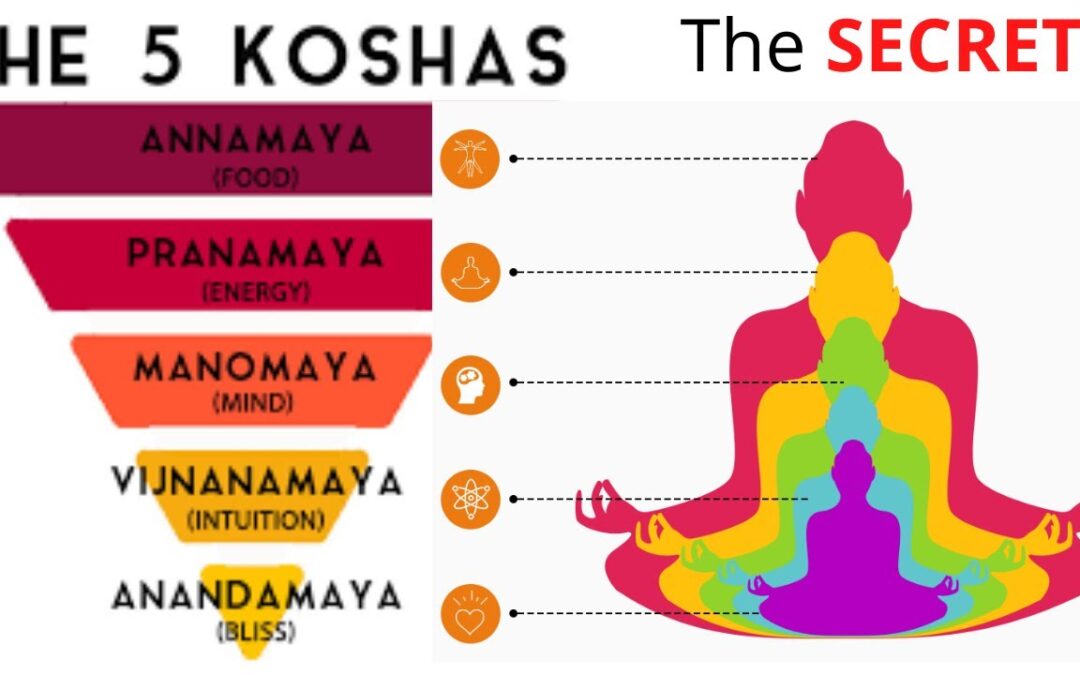
by Yoga In Nepal | Sep 1, 2022 | Health, Meditation
What are the five states of mind?
The mind, ego, and consciousness are all discussed in Patanjali’s Yoga Sutras, among other facets of yoga. They explore aspects of the self that most of us tend to ignore. The term “yoga” refers to the practice of stilling the fluctuations of the states of mind as described in the Yoga Sutras.
That is to say, the states of mind devoid of the constant stream of distracting thoughts and mental clutter. Despite the seeming ease of the term “yoga,” actualizing its benefits is a challenging endeavor. Mindsets described in the yoga sutras:
- Kshipta – Chaotic or most fickle state of mind
- Mudha – Dull or Lazy state of mind
- Vikshipta – Partially focused mind
- Ekagra – One-pointed mind
- Niruddha – Fully absorbed mind
-
Kshipta – The Monkey Mind
A state of mind known as kshipta, or dispersed thinking, is the most common and least desirable way to go through the day. Because of the high proportion of waking time spent actively engaged in some form of thought or action, the “rajas” guna predominates in this condition.
A person in this mental state experiences rapid swings between positive and negative emotions, such as love and hate, liking and disliking, pain and pleasure, excitement and boredom. The states of mind is restless and easily distracted, always racing from one idea to the next. It’s possible that your eyesight will get blurry, causing you to feel uncomfortable, confused, and difficult to understand and get along peacefully with others in your relationships.
Symptoms of Ksipta State
- Having no ability to make decisions
- being restless
- Confusion and absolute lack of clarity
- Anxiety
How To Handle Monkey Mind
You can learn to handle your monkey states of mind by practicing yoga, which teaches you that you, the knower, are separate from your thoughts. By taking on the role of an objective observer, you can train yourself to focus only on positive, useful thinking patterns while letting go of the negative ones.
-
Mudha – The Donkey mind
Mental lethargy, drowsiness, and a lack of energy characterize the Mudha, or Dull, state of mind, which is governed by the ‘tamas’ guna. As a result of the mental lethargy, it is difficult to address the complexities of life.
During our waking hours, most of us move back and forth between Kshipta and Mudha. As a result of our rajasic nature, we are drawn to an object of sense. However, if the desired outcome is denied to us or additional work is required, the dull mind owing to lack of focus, finds excuses, and we are trapped in a state of dissatisfaction.
Symptoms of Mudha State
- Lack of energy and vitality
- Poor concentration
- Distorted connection with the inner self
- Depression /Sadness
How To Handle Donkey Mind
When you have to adjust to a dramatic change in your life, you may find that your sense of self begins to fade.
To calm the states of mind in this condition, one must let go of all thoughts and re-establish contact with one’s inner world, which can be accomplished through practices like yoga and meditation. This will allow one to discover their ultimate true self, which will serve them well in any circumstance.
-
Vikspita – The Butterfly mind
There are moments in life where sattva guna starts to dominate, and the states of mind can focus and concentrate. We feel balanced, happy, and clear in all spheres, and life appears to be a beautiful flow.
Symptoms of Vikspita State
- A calm mind, however, gets easily distracted
- Better concentration
- The mind is sometimes stable and other times confused.
- Ekagra – One-pointed mind
The mind is at rest; all thoughts and feelings have subsided, and it is now ready for concentration. When in an Ekagra state of mind, a person can focus their entire being on a single task for as long as they choose without being distracted by anything outside of themselves.
Symptoms of Ekagra Mind
- Better focus
- More awareness and clarity
- Thinned ego
- Awakening of intuition
Mind In Ekagra State
When the states of mind reach this point, it is said to be in yoga, or it can be seen as the beginning of one’s yogic journey. You’ve found a singular focus in life that will allow you to sort through information, let go of your ego, develop your intuition, and gain access to extrasensory perception. In this Ekagra state of mind, you can focus on detailed parts of everything that you tried to have concentration.
- Niruddha – fully-focused mind
After experiencing Ekgrah (single-mindedness), one can maintain concentration on a single task at hand. In this case, one’s focus is singularly fixed and undivided.
By this point, the states of mind has been cleared of all impressions, both old and new, and is completely at rest. One can move through life with effortless elegance. The ever-evolving circumstances of life elicit no response.
Symptoms
- Single-pointed focus
- Stable mind
- Grace in the overall aura
- The complete stillness of thoughts
Mind in Niruddha State
Even though attaining a Niruddha state of mind (Yoga Chitta Vritti Nirodha) is the pinnacle of yoga, you must maintain your yoga practice and conduct in-depth self-examination on a regular basis to get there. Look for fresh methods to keep your awareness fresh and expanding.
Conclusion
Most of us spend most of our waking hours in one of the first three mental states of mind. Our connections to the outside world are maintained by these three mental states.
Keeping focus and equilibrium is difficult for a Kishipta’s restless mind. The Mudha states of mind is too exhausted to concentrate.
Inconsistency and a lack of concentration are hallmarks of the Vikshipta mind. The yogi can internalize their awareness through the last two states of mind (Ekagra and Niruddha). Therefore, it facilitates increased levels of concentration.
The above categorization of mental states aids in self-awareness, which in turn promotes spiritual and material development.

by Yoga In Nepal | Jun 22, 2022 | Yoga
Sushumna Nadi
We exist in a physical, mental, and spiritual state. We may think we are one single unit but are the combination of various things and complex entities. The same is with the energy supply system of our body. It is much more complex and involves various methods, ways and understandings to even understand the procedure briefly. One of the systems of the body is the Nadis, which are the small energy channels that are located all around the body and perform of supplying Pranas all over the body. The pranas are the vital life force that is present in all of us. There are mainly three and even among the three, there is Sushumna Nadi which plays the most vital role in the energy distribution and flow of the Prana.
Sushumna Nadi
This is the Nadi that is active at the center and said to be the most important. It performs various functions in the body and is believed to pave the road towards knowledge and salvation. There are various methods that the Yogi practice to awaken this Nadi as their goal is enlightenment and when activated Nadi will show the way to enlightenment. Yogi uses the power of Yoga and meditation to master this, Nadi. With effort, dedication, and discipline for a long amount of time, anyone can awaken this dormant power that lies in all of us.
Following are the functions of Sushumna Nadi:
Key channel
Sushumna Nadi is the key channel within the body where the energy flows. This Nadi starts at the Muladhara and ends at the base of the spine. The most notable thing about this Nadi is that this Nadi system lies at the center of the body and passes through all the chakra points in the body. Since it passes directly through all the chakra points located in the body to the base of the spine, it automatically becomes the strongest of the energy supply system among the other Nadis. It is also known to energize the chakra points through which it passes.
Compared to the other Nadis, when other Nadis become disturbed it hampers the body to a level. However, when this Nadi becomes hampered, it will also disrupt the flow of energy in the chakra points of the body
Meridian lines
Sushumna Nadi which is located at the center which is between Ida and Pingala Nadi is also known to govern over the six yang meridian lines.
Transfer of Prana
Prana is the subtle life energy that is ever-present within us. Prana is life itself and the true nature of life itself is subtlety. Prana is flowing through all of us through every organ and body part. Some parts need a higher concentration of Prana while some parts need a lower concentration but make no mistake each and everything needs Prana to be alive.
There are many Nadis in our body that transfer Prana to body parts. Some are important and named while some are not named but there is one that is the most important channel of Prana in the body that passes through even chakra points and that is Sushumna Nadi. Prana travels freely from the crown chakra to the root chakra through the Sushumna Nadi system.
Pathway to enlightenment
Enlightenment is a vast word that cannot be even defined in many books. Shortly we can say that it is the elevated state where one becomes one with the state of awareness. We are all aware to a certain level. In fact, with developed minds, humans are born with a certain level of awareness that is higher than that of animals. However, to go to the perfect cosmic level of awareness even humans must walk a difficult path that is going to challenge their beliefs and understanding.
Only a few have been able to sense this level of awareness and even a few have been able to achieve this level of awareness. It is believed that Sushumna Nadi is the path to enlightenment. Now, awakening does not necessarily grant enlightenment but opens the path that one has not noticed before in their lives right in front of them.
New energy
The Ida and Pingala Nadi are dominant in the left and right parts of the body. Ida looks at the right brain and the left part of the body while Pingala looks at the opposite part of the body. Most individuals can channel these Nadis and harness the gifts that are bestowed by them. They try, then awaken it and become satisfied with it. That is one of the many reasons why people are not able to move beyond Ida and Pingala.
Deep in their body there lies another dormant powerhouse that is even beyond the energy that you have tapped into. That is the very reason why Sushumna Nadi is also called the most significant aspect of human physiology. When Sushumna Nadi is activated and channels the Prana efficiently through it, the body becomes a receptor to various types of energy and power that one has never felt in their life.

by Yoga In Nepal | Jun 9, 2022 | Yoga
Mind level and its types
Our mind is the most prominent part of our body. It is situated inside our head and lies in the topmost part of the body and is responsible for the overall functioning of the body. Our mind is a single organ. Yes, it may be true but, on the surface, the mind is the combination of various parts and fragments which is unique from other parts and have their unique functions. They are collectively working together to form a single mind. The mind has a mind level and even those levels have their types.
There are two types of mind levels, the inner mind, and the outer mind. The outer mind has three parts, conscious mind, subconscious mind, and unconscious mind. However, the inner mind level is divided into four parts supra-conscious, superconscious, supreme conscious, and cosmic conscious.
Let us begin to look at mind levels, starting from the outer mind and its types:
Conscious mind
The conscious mind is the mind that is active on the surface, and one is currently aware of. It has a very volatile memory and passes memory to other parts of the mind. Simply, it is the part that is thinking about what you are thinking now. The mind that is on the surface and can be seen on the surface is only a fragment of our consciousness and mind. We can see that on the various mind level our conscious mind is the tip of the iceberg while a huge fragment of that iceberg remains underwater unseen by anyone.
Subconscious mind
This level of mind is the conscious and unconscious mind. This part stores the memory and experience that are sent by the conscious mind and returns it to it when the time of experience and past memory is needed. This mind is responsible for dreams and is more active when our conscious mind is not working, and it is during the time of sleeping.
It is said that the Subconscious mind is one of the most important parts of the mind itself. The subconscious mind is even more active and powerful than the conscious mind. It is the very reason why it is said that the mind is more active and powerful during sleep as it is the time when the subconscious mind. That is the very reason why some artists say that they sometimes compose their songs and music in their dreams and later write in the morning.
Unconscious mind
The unconscious mind is part of the outer mind level which acts as the reservoir of memory and feelings. This mind level is mostly the cause of our behavior, actions, and way of thinking which is based on core memory. Unlike the other part of the mind, this mind’s memory is not available for introspection. It is where the core memory is stored. Core memory is something that is at the core of the memory, and in fact, people are not even able to alter it or remember it.
Now, let us look at the types of inner mind levels and their types:
Superconscious mind
It is the type of mind that reaches the highest level of awareness of the human mind. Frankly speaking, it is even beyond the conscious and the subconscious mind. This mind is linked to the third eye chakra and is located between the center of two eyebrows. This mind is the link that one needs to tap into the state of energy by living in this material world.
Supra conscious mind
It consists of three words, Supra, conscious, and mind where supra means beyond. This is the level of mind that is beyond the conscious mind. There are many things beyond the outer and the conscious mind, which deal with energy and the realm beyond the world of matter. These inner mind levels exist in the physical plane but operate and connect with the spiritual realm. The supra-conscious mind level is beyond logic, consciousness, and even reality.
Supreme conscious mind
It is the mind that when activated provides the state of supreme consciousness. It is said that everything in this entire universe is changeable and with time changing all aspects is inevitable and the only thing that is going to remain constant and unchanging is the supreme consciousness. A supreme conscious mind provides a sense of equality for the individual who has activated it. They see each and everyone without any form of indifference and discrimination.
Cosmic conscious mind
The intellectual potential that is given by the cosmic conscious mind is called cosmic consciousness while the source or the mind which grants the connection to those is called the cosmic conscious mind. It is one of the ultimate states of the inner mind level, which when activated grants the ultimate knowledge of the cosmos itself.
The cosmos is the entire universe itself and the energy related to the cosmos is called cosmic energy. The cosmic mind level of the human body grants the individual the connection to knowledge and touch with the energy of the cosmos.

by Yoga In Nepal | Jun 1, 2022 | Yoga
Niyama in yoga and its 5 parts
Niyama in yoga are the guidelines and duties of healthy living and a liberated state of the soul. Niyama is a Sanskrit word and when translated it means rules and Niyama in yoga are the rules of the life by which one should live. When one follows the saying of Niyama in yoga they get the satisfaction of the soul which is extremely hard to achieve otherwise.
There are a total of 5 Niyama in yoga. Let us look at all those Niyama in yoga in detail:
Sauch
Sauch means cleanliness. This Niyama in yoga is all about cleanliness and clearness. It means the purity of both the mind and body. The mind is our inner self and is the first part of the process of Sauch. While the second is the body and is our external self by which we interact with the world.
Our outer body needs to be cleaned as well as our surroundings. Clean body and clean surroundings are the first aspects of healthy living. When the body and surroundings are unclean, it becomes the host of various diseases and conditions. However, when the environment and surroundings are cleaned the disease cannot exist there.
A clean mind is also as important as a clean body. When the mind is not clean it becomes host to various negative thoughts and feelings. Some thoughts and emotions are very harmful to one’s very existence so one needs to follow the rules of Sauch.
Santosha
Santosha means satisfaction. This Niyama in yoga is all about getting happy with what one has. Human beings have endless desires and wishes. No matter who they are and in what position they are, their needs and desire are never going to get settled. A person may either be extraordinarily rich or extremely poor, they have a good life with basic needs or not, it does not matter most are not satisfied.
Santosha Niyama in yoga, tells everyone to be satisfied with what they have. Yes, one needs to always try to be their better self and strive for excellence. However, one also needs to be satisfied with what one has.
Tapas
Tapas means self-discipline. This Niyama in yoga is all about living in the discipline. Discipline is another thing that sets humans apart from everyone. Animals can be trained to be disciplined, through fear and other means. However, they will never be in discipline to obtain something more or to get near to their soul, that is only what humans can do and that is what makes them very much special.
One needs to set boundaries and discipline themselves to achieve great things. Tapas in simple terms means austerity. May it be from sexual pleasure, or through the path of rejecting the world and material environment, the path is paved towards freedom and finding one’s greater self. Tapas Niyama in yoga assembles spiritual power through the process of austere. When all of the distractions are rejected and only focused on the soul, the one thing that truly matters wonders happens.
Svadhyaya
Svadhyaya means self-reflection. This Niyama in yoga is all about learning about yourself. The world is very big and mysterious, there are wonders and magic in every part of the world. It is amazing how much there are. However, while looking at the vastness and everything about the world we forget to see ourselves. The eyes and the body that are watching and experiencing this vast and entire world are also as worthy and amazing as the world which deserves knowing, studying and reflection.
We are a soul that is living in this body. Most of us think that we are body and experience the world through it, trying to figure out the world. However, we also need to figure out ourselves and that is what Niyama in yoga tells. When one closes their eyes to the world then they see themselves, the real them which is hidden from the world even themselves. One can meditate, think about their actions, practice yoga to self-reflect.
Ishvarapranidhana
Ishvarapranidhana means to surrender to higher power or Ishvara. This Niyama in yoga is about giving yourself to the almighty. Here higher power means Para Brahma who is the source of everything. By everything, it means the source of all of the life, non-living, living everything is Para Brahma. Even we are all part of the eternal soul.
Eternal peace and eternal bliss are only obtained when one truly connects with Parabrahma. We all have the fragment of God inside of us but without realizing it and working we are never going to activate the connection. Ishvarapranidhana Niyama in yoga tells the way to surrender oneself to the higher power and make the way to bliss.
There are various questions regarding what or who is Ishvara. Ishvara depends upon the individual. Meaning that Ishvara is not a specific god or entity, they can be anyone with a personal connection to the individual.

by Yoga In Nepal | May 21, 2022 | Ayurveda
Pancha Kosha-5 Koshas Of Body
Yoga and yogic philosophy are very vast fields. It is composed of various teaching, learning, and knowledge. Among the various philosophy and teachings, there is the teaching and philosophy of Pancha Kosha. Pancha Kosha are the five layers that cover the soul of an individual.
Pancha Kosha is composed of two words Pancha and Kosha. Pancha means five and Kosha means sheath in Sanskrit. This philosophy says that our soul is covered by five sheaths in total. They are all the level of awareness by which every experience of the individual is filtered.
The center of Pancha Kosha is the soul which is the center of existence itself. The five sheaths enclose the soul. Let us look at the five of those sheaths in detail.
The five sheaths of Pancha Kosha are as follows:
Annamaya Kosha
It is also called the food sheath and is the outermost layer of the Pancha Kosha. It is believed that the happening of the physical body can impact this Kosha, due to this very reason it is believed that this is the most vulnerable of the Pancha kosha. When imbalances in the body occur, this will directly affect this Kosha. Food is the vital element for this Kosha as it is for the physical body.
Our Physical body is very much dependent on the food we take. If we eat healthy food our physical body will be at the peak of physical self with good exercise and it will, in turn, make Annamaya Kosha very healthy, balanced, and strong. Aside from the food, good sleep, exercise, yoga practices, also aids to balance the Annamaya Kosha.
Pranamaya Kosha
This is the sheath that lies inside of the Annamaya Kosha and is the second Pancha Kosha. This is the layer of vital life force and energy. Lifeforce is the vital cosmic energy that flows as life in all living beings. When the life force is present in a body the body is alive and when it drains and goes away from the body, the body dies.
Pranamaya Kosha is closely connected to Annamaya Kosha and performs the activity of animating the physical body. Pranamaya is connected to the life force in the body directly. When the life force is strong and thriving this layer of Pancha Kosha also thrives while if the life force diminishes so will the pranamaya Kosha.
Pranayam is the exercise of breath to enhance the life force within the body. It is composed of various techniques and exercises which will enhance the efficiency of breath and make the air element in the body very active. This will enhance the Pranamaya Kosha.
Manomaya Kosha
Manomaya Kosha is the third of the Pancha Kosha and is inside of the Pranayama Kosha. This is the level of the mental and psychological sheath. The mind and psychology are deeply related to perception.
Every human is unique to other humans, and it is not a matter of physical appearance but a matter of perception and mind. It is your thinking, mentality, way of life that makes you unique and not the material factors.
Your mental aspect is a very important part of your being, and this layer reflects your mental state. As you walk along with your life and have a better perception and strong mentality this layer strengthens. There are also various ways one can make it better immediately, like doing meditation, yoga, and other things which make your mind and will stronger.
Vijnanamaya Kosha
This is one of the innermost sheaths of the Pancha Kosha only second to the Anandamaya Kosha. This is the level of intellect. Intellect is not something you are born with but is something one has to work on continuously for a long period. It can be said that it is the collection of the experience one has had with the world for a long period. This Pancha Kosha is directly connected with inner wisdom as well as the deeper states of consciousness.
Consciousness is a very important aspect of oneself, it is who we are and what makes and defines us. This kosha of Pancha Kosha is especially important for inner growth and defines one’s awareness.
One can strengthen one’s consciousness by various yoga and meditation as well as similar activities.
Anandamaya Kosha
This is the final of the Pancha Kosha and is the closest to the human soul. This is the sheath of bliss that gives eternal peace and satisfaction. The closer the sheath grows the closer it will be to the soul and the more spiritual the sheath becomes. This sheath is beyond logic, mind, consciousness, and the materials of the world. This sheath provides the eternal bliss which no material in the world provides and satisfies the soul completely.
This of the Pancha Kosha being closest and connected with the soul of the individual is capable of connecting with the universal consciousness. One can use this connection to achieve enlightenment also. One needs to walk the path of meditation, yoga, and similar things to achieve universal consciousness.
